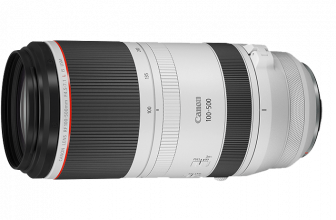
It’s been possible to shoot with lens filters on the iPhone before, but not always with all lenses at once, and Pan’s Scheme Snap Filter system covers them at once with a series of different options.
There may be some confusion with the system’s actual name. When PetaPixel first reported on the launch, it was called the iPhone Magnetic Filter System. The startup (and retailers now selling the system) refer to it as Pan’s Snap Filter. My review samples were compatible with the 13 Pro Max, but were designed for the iPhone 14 Pro and 14 Pro Max.
They can work just the same with the iPhone 12/13 Pro/Max models because the respective phones retain the same size and all support MagSafe. The system can be challenging to use with a MagSafe-compatible case already on the phone, so you may have to go naked with it more often than not. The real question, though, is whether the filtering effects make a lasting impression on your iPhone’s imaging capabilities.
Design and Build Quality
The Snap Filter is made up of two key parts that need each other for it to work. The base magnetically snaps onto the back of the iPhone, while the filters themselves are small slabs that slide into the opening and lock in with a satisfying click. Pan’s built the base with a raised profile for the filters to put some distance between the lenses and filters. Durability is hard to read because the filters are made of glass, exposed in the case of accidental falls. They’ll protect the phone’s lenses, but not sure how rugged they themselves would be.
![]()
My iPhone 13 Pro Max laid pretty flat despite that, but when I tried this with a MagSafe-ready Apple leather case, the lip extending out from the frame around the cutout for the lenses wouldn’t allow it to lay flat and rest on top. I wasn’t able to test this out with other cases, but based on this one example, the base should be fine with cases that are flat all around the back.
The filters come in a variety of bundles, though you could also get them all in one package. The Effect Bundle includes the Black Mist, Cross-star, Blue Streak, and Gold Streak filters. Both the blue and gold streak filters each have separate slabs with horizontal or vertical lines to create the effect in either portrait or landscape orientation. For the ND Filter Bundle, the four filters reduce the light hitting the lenses by various stops — -2, -4, -6, -8. All told, there are 10 unique filters in Pan’s current lineup.
![]()
The benefit of this setup is not just the variety, but also how they cover all of the rear lenses without any visual obstructions. Some phone lens filters only apply to one lens rather than the full array. Because there’s nothing to move or slide into place to switch between lenses, you can shoot with the wide, ultra-wide, or telephoto lenses and see the same effect.
Taking Slides
There is real utility in having a filter that applies to each rear lens without so much as switching between them. I realized that quickly when testing these out, looking for creative angles or ideas on how to make the best use of them. Pan’s doesn’t outline a whole lot on what’s possible, and that may be the point. It may be more likely that users shooting with them will show the startup what can actually be done with this tool.
The Black Mist and Cross-star filters are highly situational, especially in the latter case where you need a light source of some kind, be it lamps, bulbs, candles, or something similar. Black Mist adds a softer tonality to shots that is pleasing with decently lit subjects. Brighter conditions often produce better results with that filter, though I liked the low-light shot I got of a pinball machine myself.
![]()
I had fun with the streak filters, only it’s impossible to control how far the effect reaches for every shot. Light streaks bolt out of the frame, especially horizontally, whereas vertical ones range based on the strength of the light source. Admittedly, I have limited experience shooting with filters like these, so may have missed nuances along the way, but given the Snap Filter system is made for the iPhone, there’s a very good chance most potential users wouldn’t be well-versed.
![]()
![]()
![]()
The ND Filters offset slow shutter speeds, depending on how many stops you want to go down. They look like polarizers, but they didn’t always shoot like it in my experience. While they could reduce overexposure in a scene’s brightest highlights, they didn’t amplify contrast in the shadows. For instance, shooting a scene with a blue sky in the background gave it a grey sheen that didn’t look appealing at all. It was as if a blanket of smog covered the horizon. Without the filter, the sky appeared truer to life.
![]()
But then there were times the filters did a good job, like balancing the light coming from the windows with the shadows indoors, such as in the photo below. Pan’s mentions video a lot in marketing these filters and I can understand why when it’s so much easier to focus on a subject and not have the exposure dramatically change because of it.
![]()
Swapping filters isn’t difficult, but bringing several of them with you can create a logistical challenge. Each filter comes in a protective plastic case with a foam cutout. While you may not end up having all 10 as I did for this review, they do take up space if you’re looking to travel light with your iPhone. You can easily pocket a couple, but you’ll need to place them in a bag if you’re bringing a bunch with you. It’s a minor issue, and perhaps nothing to worry about if you pay extra for Pan’s carrying case.
More Hits Than Misses
The biggest challenge is making these filters work with the vast array of iPhone cases. Manufacturers usually make their cases with protruding lips to protect the rear lenses, so don’t be surprised if the Snap Filter base doesn’t sit quite right on. It is tedious to take off the case and put it back on again to accommodate the base. It’s just a shame such a well-constructed base can’t fit as snugly with a lot of the cases out there — that would be so convenient.
I would also say it takes some time to get used to using the filters to begin with. Not every setting is ideal for them, but when it is, they could produce quality images with effects that aren’t always easy to recreate otherwise. Since Pan’s sells the Snap Filter in bundles rather than individually, you’re making a commitment up front on which creative direction you want to go in.
![]()
Are There Alternatives?
Moment has a set of filters compatible with the iPhone. They generally attach through cases fitted with adapters to work with a variety of filters, including those the brand makes for mirrorless and DSLR cameras. Its Cineclear filters are the closest conceptually to Pan’s design, though they focus more on protecting the lenses than creating any discernible effect.
Sandmarc makes a kit that includes a clip-on piece capable of taking any of its compatible filters. While it may not matter as much which case you have on your iPhone, the fit may not be as secure. Despite limited options, it’s hard to find filters that do the same things Pan’s does, making it a pretty unique set.
Should You Buy It?
Yes, if you think these unique filters can give your imaging needs a boost. They don’t come cheap at $250 for the whole set with a case to carry them, so the experimentation will cost you. But until another similar set emerges, the Snap Filter system is a rare find.
creditSource link






